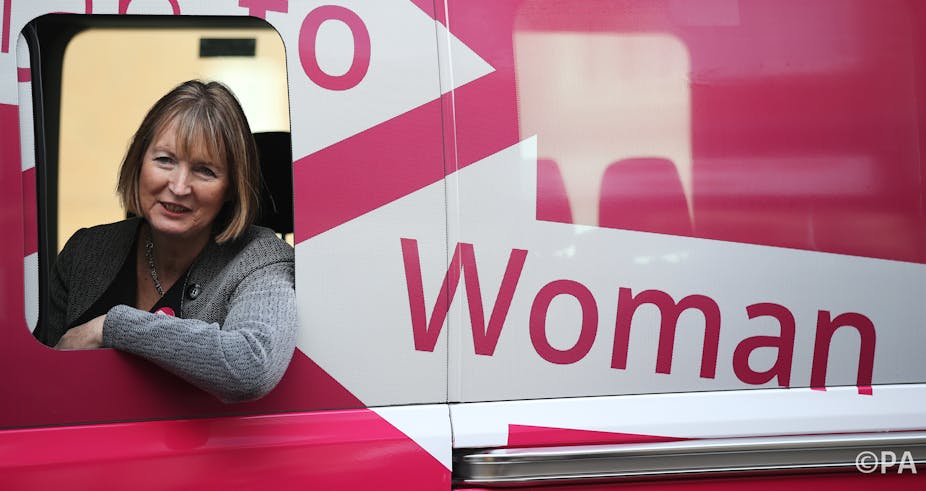Election campaign coverage is an odd genre, made up of game show, satire and soap opera in equal measures. It tends to be about one of three topics: the election horse race; slinging mud and poking fun at the leaders, their gaffes and the weaknesses they imply; and the campaign stunts that succeed and those that fail.
So far, 2015 is no exception. Much attention has been driven by polls, which show a high probability that no single party will win an overall majority. The outcome, therefore, is likely to be yet another coalition government.
In an Independent article typical of the obsession with competition, Martin Boon of market research agency ICM described the election as a “wildcard strewn nail-biter” while Ben Page of Ipsos MORI dismissed current predictions as a “mug’s game”. Joe Twyman of YouGov preferred using geological language, foretelling “a few tremors, though earthquakes are unlikely”.
The polls have given rise to endless speculation about possible constellations of the coalition. For anyone observing the British elections from continental Europe, where coalition governments are often the norm, the rising panic at the prospect of another hung parliament might seem difficult to fathom. Yet such speculation keeps commentators and pollsters in gainful employment.
And the horse race angle certainly turns the election into an exciting show. Some evidence suggests that it is appealing to voters, but critics see it as risking alienation and cynicism, amplifying trends of political disengagement and mistrust.
This all focuses coverage narrowly on strategy and process, to the detriment of substance. There are plenty of big issues to debate, and despite the bluster, some of these – including housing, tuition fees and immigration – have managed to sneak their way onto the agenda.
Mud-slinging, robots and car crashes
But attempts at bringing the issues to the forefront have been less successful than the time-honoured tactic of slinging mud at the opposition. For the Conservative Party, the main approach has been personal attacks on Labour leader Ed Miliband.
In a campaign climate that has become increasingly focused on personalities over politics, Miliband has frequently been targeted for his robotic delivery and lack of charisma, vision and energy. Much has been said about the fact that he fails to ignite the passions of even his own Labour Party voters. In the most widely covered campaign poster so far, the Conservative Party described Miliband as voters’ “worst nightmare” – made even more frightening by the possibility of a coalition match with SNP’s Alex Salmond and Sinn Fein’s Gerry Adams.
The Labour Party responded by vowing that its campaign will refrain from stooping to the Tory tactic of spreading “falsehood, fear and smears”.
However, Miliband’s perceived weakness took a back seat when Green Party leader Natalie Bennett was interviewed on LBC by Nick Ferrari on February 24, and struggled with the costings for her party’s policy to build 500,000 new social housing units. In what observers quickly dubbed a “car-crash interview”, Bennett stumbled over her words and paused repeatedly, apparently suffering from a cold.
Although the Green Party has experienced a recent surge in voter support, and is now predicted to win 7% of the votes, a single gaffe like this has the potential to make or break the fortunes of a party. This is especially true because the incident fits within a larger narrative that sees Bennett as the least experienced and most untested of the party leaders. Though it is no Bigotgate, it shows the unrelenting scrutiny of the performance of party leader at a time of personalised politics.
Stunts that backfire
Like every other election, visual stunts manufactured to maximise positive coverage are not limited to attack posters, but range from the ubiquitous images of David Cameron in a hard hat and Nigel Farrage with pint in hand to Nick Clegg trying to “impress future voters with his finger painting skills”.
Such images make for convenient media events, but also seek to shape or contest the campaign narratives by generating metaphors of leadership, as when David Cameron has a go as a train driver and Nick Clegg shows “the Liberal Democrats’ ability to knuckle down and be a team player on the rugby pitch”.
But stunts can also backfire, sometimes spectacularly. As the 2010 campaign first showed us, poster campaigns are risky in the era of social media, where it is easy to make subversion and satire go viral.

In 2015 so far, the biggest backfire has come from the Labour Party’s “pink bus” – aimed at connecting with women voters but denounced as patronising and sexist on social media. After it was nicknamed the Barbie bus and attracted widespread ridicule, the Labour Party struggled to contain the controversy by describing its colour as “cerise” or “magenta.”
Lucy Powell, a Labour election coordinator, only made matters worse by suggesting the aim was to “have a conversation about the kitchen table, and around the kitchen table”. Whatever the colour of the bus and its purpose in driving around Britain, it will serve as an enduring reminder that not all publicity is good publicity.
If anything, however, what has stood out in the early stretches of the campaign is its relatively low position in the pecking order of the news agenda. Discussion of the main issues in the election has been dwarfed by far more heated debates over the colour of that dress. When it does take centre stage – whether in the form of game show, satire or soap – we can only hope that the response will be as energetic and participation as widespread.
Karin Wahl-Jorgensen would like to acknowledge Steven Buckley for assistance in carrying out research for this column.

